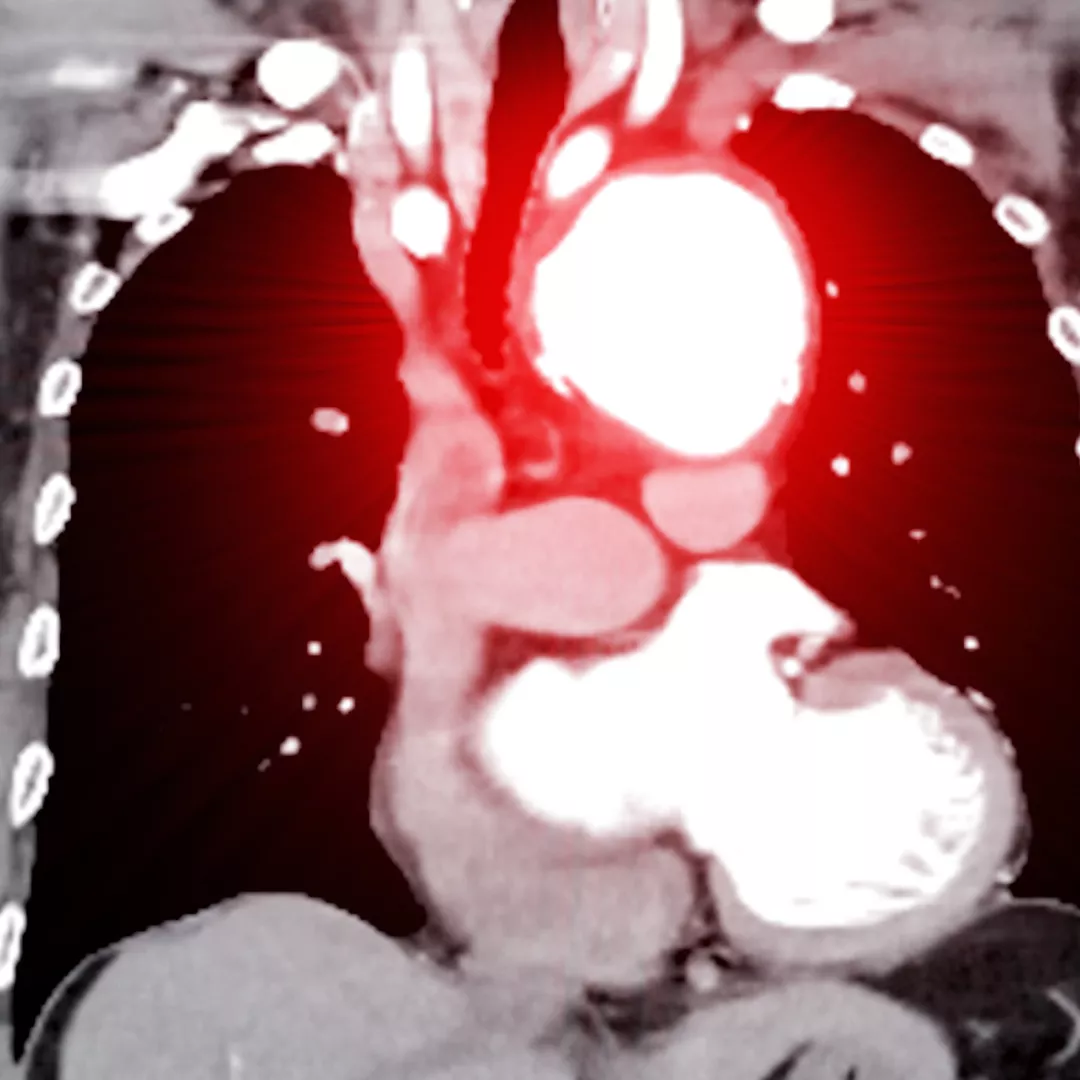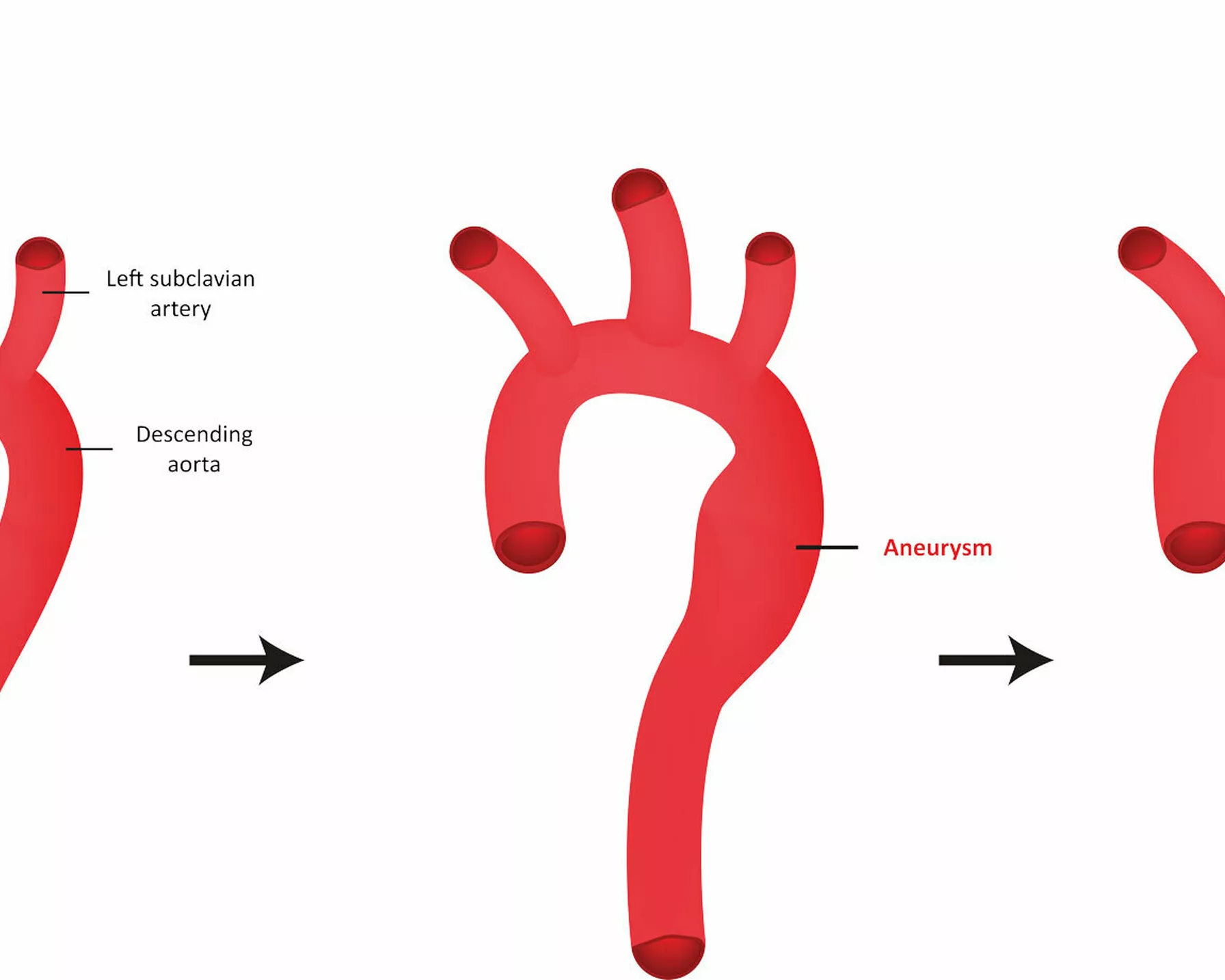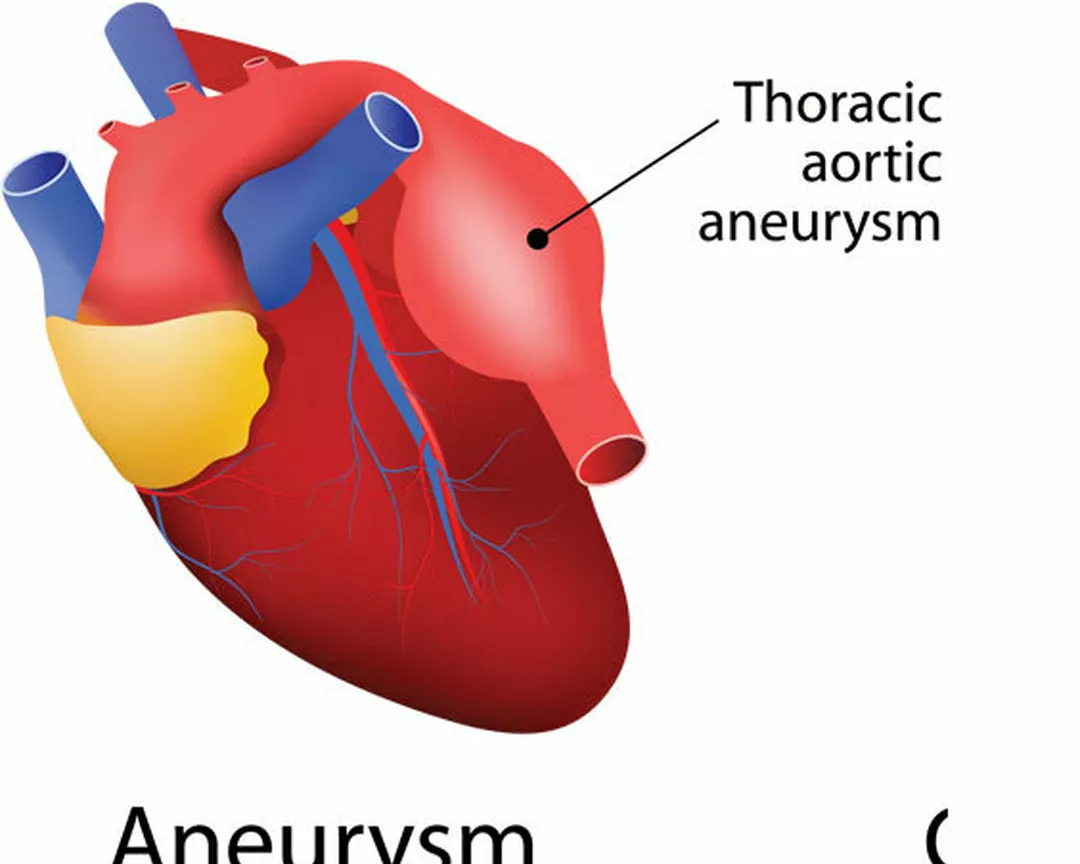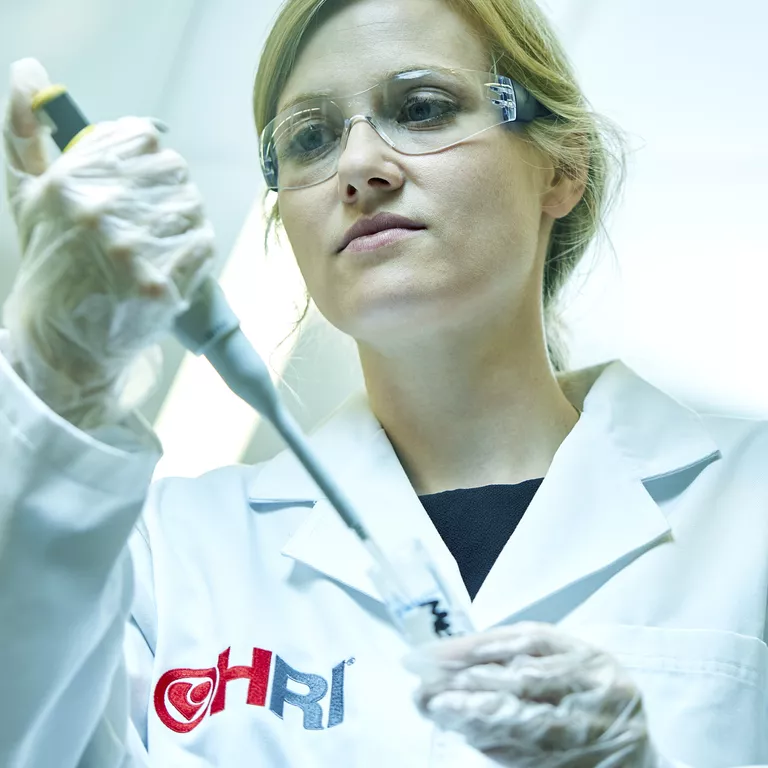Days after Kyle Sandilands announced he must undergo surgery for a brain aneurysm, the radio presenter revealed another aneurysm has been found in his chest.
Speaking on the Kyle and Jackie O Show, Sandilands, 53, explained that he had been discussing options with his medical team when he was told they had located another aneurysm in his aorta.
He also has a significant calcium build-up in his chest that could cause a heart attack.
“So that’s no good. Very bad calcium build-up, who would have thought this, seeing photos of me? Very bad calcium build-up in the heart, where I’m likely to have a heart attack, 25 per cent chance of having a heart attack in the next five years if I do nothing about that.”
So, what is an aneurysm in the aorta, what is Kylie’s likely prognosis and what can you do to get tested and help prevent this heart condition?
Professor Andrew Coats, CEO and Scientific Director of the Heart Research Institute (HRI) explains.
What is an aortic aneurysm?
“An aortic aneurysm is a balloon-like bulge that occurs in the wall of the body's main artery, called the aorta. The aorta carries blood from the heart to the body. Aortic aneurysms can occur anywhere in the aorta. They may be tube shaped or round.”
Aortic aneurysms include:
- Abdominal aortic aneurysm. An abdominal aortic aneurysm occurs along the part of the aorta that passes through the belly area.
- Thoracic aortic aneurysm. A thoracic aortic aneurysm occurs along the part of the aorta that passes through the chest cavity.
Some people may have both types of aortic aneurysms.
“Having an aortic aneurysm increases the risk of developing a tear in the inner layer of the wall of the aorta. This tear is called an aortic dissection.”
“Aortic aneurysms can develop and grow before causing any symptoms,” said Professor Coats. "It is often known as a silent killer."
“Early diagnosis and treatment may slow the growth and prevent serious or life-threatening complications.”
“To screen for an aortic aneurysm, your doctor may recommend an imaging study to look at and measure the aorta.
“As Kyle said, if his aortic aneurysm ruptures, it can be fatal. However, both open and endovascular surgery can successfully treat a ruptured aortic aneurysm in some cases.”
“Calcium buildup in the heart which Kyle also mentioned, is a sign of plaque buildup in the arteries that supply blood to the heart. This buildup can narrow the arteries, reducing blood flow and oxygen to the heart.”
“Heart-healthy lifestyle changes can help prevent aortic aneurysms from developing or from growing larger and can also prevent artery calcification. In addition, if you have a number of risk factors and with that, known conditions that predispose you to an aneurysm, such as hypertension, diabetes and atherosclerosis, you need to have these conditions treated in addition to making lifestyle changes."
Lifestyle changes include:
- Eating a heart-healthy diet
- Having regular exercise
- Maintaining a healthy weight
- Quitting smoking
“I also urge people to go and see your GP for a Heart Health Check. A Heart Health Check is recommended for all Australians aged 45 and over, and for Aboriginal and Torres Strait Islander patients aged 30 and over.”
“Cardiovascular disease is Australia’s biggest killer. One Australian has a heart attack or stroke every four minutes. Having a regular Heart Health Check with your GP will help you better understand your risk of a heart attack.”
“Regular heart checks can also help detect calcium deposits early.”
How common are aortic aneurysms?
Aneurysms are most common in men. They affect only about one per cent of men aged 55 to 64, although do also occur in women. They also increase in incidence with increasing age.
What causes aortic aneurysm?
The causes of an aortic aneurysm are often unknown, but can include:
- Atherosclerosis (narrowing of the arteries) – the main underlying cause of cardiovascular disease
- Inflammation of the arteries
- Inherited conditions, especially those that affect connective tissue (such as Marfan syndrome and Ehlers-Danlos syndrome)
- Injury to an aorta.
- Infections.
What are the symptoms of an aortic aneurysm?
In many cases, people don’t know they have an aortic aneurysm. An aneurysm often doesn’t cause any symptoms until it bursts.
If an aneurysm ruptures, it’s a medical emergency that requires immediate treatment.
Symptoms of a ruptured aneurysm come on suddenly and can include:
- Dizziness or lightheadedness
- Rapid heart rate
- Sudden, severe chest pain, abdominal pain or back pain
Finding an aortic aneurysm before it ruptures offers your best chance of recovery. As an aortic aneurysm grows, you might notice symptoms including:
- Difficulty breathing or shortness of breath
- Feeling full even after a small meal
- Pain wherever the aneurysm is growing (could be in your neck, back, chest or abdomen)
- Painful or difficult swallowing
- Swelling of your arms, neck or face
HRI's Assoc Prof Mary Kavurma is leading research on aneurysms and the associated risk factors.
How is aortic aneurysm diagnosed?
Many aneurysms develop without causing symptoms. Providers often discover these aneurysms during a routine checkup or screening.
If you’re at high risk of developing an aortic aneurysm (or have any aneurysm symptoms) your provider will do imaging tests. Imaging tests that can find and help diagnose an aortic aneurysm include:
- CT scan
- CT or MRI angiography
- Ultrasound
What is HRI doing?
HRI is actively researching aneurysms and the risk factors and diseases associated with aneurysms. There is significant research occurring in HRI’s Centre for Peripheral Artery Disease (PAD), which is led by Assoc Prof Mary Kavurma.
“An aneurysm is a form of Peripheral Artery Disease. People often don’t know they have an aneurysm until they go in for a scan, often for something else, and it’s picked up," explains Assoc Prof Kavurma. "An aneurysm is often silent and difficult to detect. "
"My team and I are researching why aneurysms occur, and with that, we are working to develop biomarkers to better identify and diagnose aneurysms and novel therapies to treat aneurysms”.





